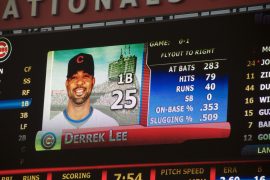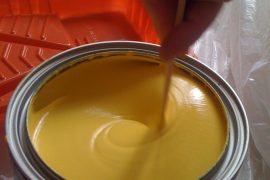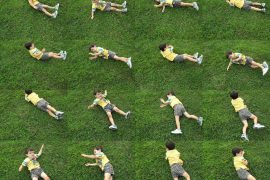The first professional baseball game I attended was at Tiger Park. I don’t remember who Detroit was playing that night, but I do remember the score card and tiny golf pencil I was given. I wasn’t (and still am not) a baseball fan, but I did love keeping track of the runs and outs on my score card.
That was also my introduction to the role that math plays in baseball. On Monday, Charlie Vascellaroexplained this in his Math at Work Monday interview. Between a player’s batting average and games back, this math helps fans (and team managers and sports writers) understand how well players and teams are performing.
If your kid is a baseball nut, this could be just the thing that can help keep skills sharp over the summer months. Instead of simply reading about these stats, how about teaching your kids to actually calculate them? Here’s how:
Batting Average
First up, ask your kid to tell you what he thinks a batting average is. What kind of math does he think will be involved?
Yep, he ought to notice the word “average.” Kids learn to find an average — or mean — in elementary school. A child in fourth grade or older should be able to tell you that the process involves three things: counting, adding and dividing.
A batting average is easy to find:
number of hits ÷ number of official at-bats
In other words, you’ll divide the total number of hits by the total number of times the player has (officially) been at bat. The answer is rounded to the nearest thousandth (or three places to the right of the decimal point. Easy peasy, right? Try it out.
In the last seven days, Mike Trout of the Los Angeles Angels had 23 at bats and 6 hits. What’s his batting average?
6 ÷ 23 = .261
Follow up questions: What does the batting average mean? If someone has a low batting average, what can you say about his skills as a hitter? What does a high batting average mean? What happens to a player’s batting average, if over the season he gets more hits in each game? Could a player’s batting average be zero? Why or why not? Could a player have a batting average if he didn’t have any at-bats? Why or why not?
Skills reviewed: division, decimals, rounding
Earned Runs Average (ERA)
In case you didn’t know — and I didn’t — an earned run is when a pitcher allows a batter to score. The earned runs average is the average number of times a pitcher allows runs in a game. Here’s the formula:
(number of earned runs • 9) ÷ number of innings pitched
Again, we’re dealing with an average, so it’s important to know that division is going to be involved. And if you look at that formula, you might notice another important concept: the order of operations. We’ve had quite a lively discussion about the order of operations or PEMDAS on the Math for Grownups facebook page.* In September, I’m going to demonstrate another way to remember what order is necessary for these operations. But for now, let’s just stick with Please Excuse My Dear Aunt Sally or Parentheses, Exponents, Multiplication, Division, Addition and Subtraction.
Since the multiplication is in parentheses, do that operation first. Then divide. (Okay, so really you don’t need the parentheses at all, but it’s easier to write these problem online using them.)
Here’s an example:
In the last seven days, Jordan Zimmermann of the Washington Nationals has had 2 earned runs and pitched 11.7 innings. What is his ERA?
(2 • 9) ÷ 11.7 = 1.54
Follow up questions: What does a big ERA indicate? What about a small ERA? Can you explain why? If you did the division before the multiplication, would you get the same answer? Why or why not? Could the average ever be zero? Can a pitcher have an average if he didn’t pitch a single inning? Why or why not?
Skills required: order of operations, multiplication, division
There are many other baseball stats that require math, like baserunning average, fielding percentage, slugging percentage and games back. In addition, you can take a look at a player’s stats over time and see how they’ve improved or declined. And of course, it’s interesting to compare the stats between players. If you’re unsure of the math, just google the terms!
What are some other ways to use sports for math review? Share your experiences in the comments section.
*Have you liked Math for Grownups on facebook yet? If not, what’s stopping you?












